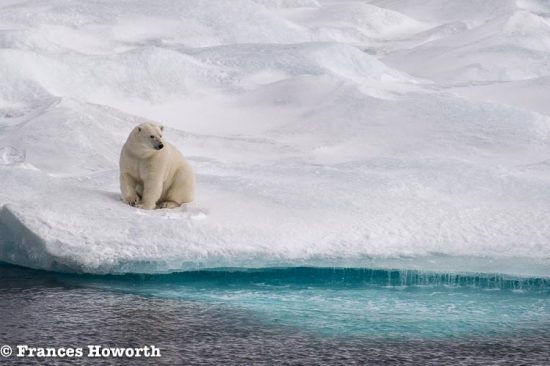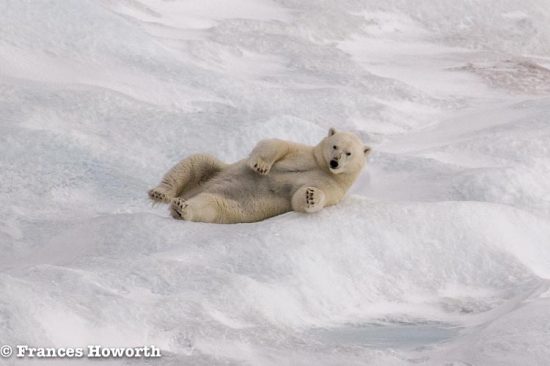
While the voyage in itself is exciting for the route it takes, the highlight as got to be finding Polar Bears in their natural habitat. Not finding them would be like visiting London and not getting to see Buckingham Palace or Paris without the Eiffel Tower.
We were very fortunate and saw Polar Bears on three separate occasions
When watching them amble across the pack ice, looking about and periodically sniffing the wind, you get an overwhelming sense that the bear belongs here.
The polar bear is the largest living land-based carnivore in the world. The hide of an adult male can reach nearly 11ft (3.5 metres) in length, about the same as a compact car. The largest males can weigh up to 1800 lbs (800 kilograms) a fair bit bigger than the largest grizzly. One of the largest ever recorded topped 2,200 lbs (1,000 kilos)

Its shape, with a streamlined head and body, reflects its adaptation to swimming. Polar Bears can run up to and maintain speeds of around 40 mph and can swim exceedingly fast. The front legs and paws do the paddling, and the hind legs serve as a rudder. In fact, the polar bear is so much a creature of the sea that, in the United States, it is protected by marine mammal legislation, which also covers whales and seals.
Polar bears are also built for the cold. Their coarse outer fur is made up of translucent hairs, which allow ultraviolet radiation in. The fur also serves as a wetsuit, trapping heat while the bear swims. Thick, insulating hairs surround their paws, and small, rounded ears minimize heat loss. A dense, woolly under fur provides added insulation to the body, as does a layer of fat up to 4 inches thick.
It is however their nose which is the most interesting because it has been proven they can smell a seal when it is some 35 miles away. Just as well given their eyesight and hearing is reported to be no better than that of humans.
Sadly the world’s population of Polar Bear numbering around the 25,000 mark is heading for extinction, hunted to extermination by the Inuit claims Danish Guide and lecturer Morten Jorgensen in his new book Polar Bears on the Edge. It’s a view point not shared by David Reid one of the Expedition Leaders travelling with Adventure Canada who believes matters such as these should be put into perspective pointing out that a quarter of a million shark are killed every single day.
Frances and Michael Howorth explored the North West Passages onboard Ocean Endeavour with the help of Destination Canada www.destinationcanada.com and Adventure Canada www.adventurecanada.com We are truly grateful to them both for the opportunity they provided with us to do our job.
